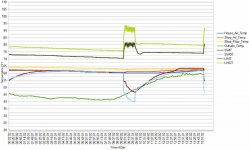alliancefab
Hot Rolled
- Joined
- Feb 24, 2009
- Location
- Massachusetts
I am in the process of finishing up my new building and radiant heat is an option to me.
My question is has anyone had any problems with the foam under the pad with heavy machines on the floor. I have 2 10,000 pound machining centers (soon to be 3 ) and a 6500 pound CNC lathe.
I post this in here because I want people who have CNC machines/Heavy machines with experience with in floor heat.
Or any other issues that may come up with in floor heat.
Thanks in advance
Jason,
My question is has anyone had any problems with the foam under the pad with heavy machines on the floor. I have 2 10,000 pound machining centers (soon to be 3 ) and a 6500 pound CNC lathe.
I post this in here because I want people who have CNC machines/Heavy machines with experience with in floor heat.
Or any other issues that may come up with in floor heat.
Thanks in advance
Jason,



